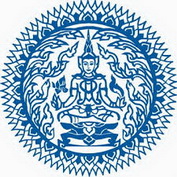Thailand to use Unmanned Aerial Vehicles to Monitor Illegal Fishing ไทยใช้อากาศยานไร้คนขับเพื่อติดตาม ควบคุมและเฝ้าระวังการทำประมงผิดกฎหมาย
Thailand to use Unmanned Aerial Vehicles to Monitor Illegal Fishing ไทยใช้อากาศยานไร้คนขับเพื่อติดตาม ควบคุมและเฝ้าระวังการทำประมงผิดกฎหมาย
วันที่นำเข้าข้อมูล 21 มิ.ย. 2561
วันที่ปรับปรุงข้อมูล 28 พ.ย. 2565
| 1,543 view

Thailand to use Unmanned Aerial Vehicles to Monitor Illegal Fishing
On 14 June 2018, General Chatchai Sarikulya, Deputy Prime Minister, visited U-tapao Airport, Rayong Province, to oversee the launch of unmanned aerial vehicles’ (UAV) sea patrol operations that will strengthen monitoring, control and surveillance (MCS) capacity against illegal fishing.
The application of UAV for sea patrol consists of two elements; (1) deterrence: the UAV patrols the designated area at regular intervals and alerts the Fisheries Monitoring Center (FMC) as soon as any misconduct is found, so that the FMC can inform the at-sea inspect team and the Port-in Port-out (PIPO) Control Centre to carry out further investigations, and (2) suppression: the UAV is utilised by the FMC to cross-check and gather information on any targeted vessel that has suspicious activity detected by the Vessel Monitoring System (VMS), for comparison with those received from the at-sea inspection team and the PIPO Centre.
The UAV technology, used for aerial patrol by the Royal Thai Air Force for security purposes, is now being applied to increase the effectiveness of MCS against illegal fishing, particularly by foreign vessels in Thai waters. During the initial stage, the Royal Thai Air Force is supporting the operation by providing one UAV and collaborating closely with the Command Center for Combating Illegal Fishing (CCCIF) to draft a joint action plan. In the first phase, the areas of inspection will cover the upper part of the Gulf of Thailand, which will be extended to include the lower part of the Gulf in the second phase and the Andaman Sea in the third phase. All of these stages will be completed within 4 months.
The UAV technology will help the authorities distinguish between vessels conducting legal and illegal practices more accurately, including foreign fishing vessels illegally fishing in Thai waters. Moreover, UAV can solve constraints faced by at-sea inspection units by providing wider coverage and recording photographic evidence with modern digital technology which can then be used for law enforcement purposes.
The Royal Thai Government has continually enforced stricter measures in the fight against illegal, unreported, and unregulated fishing (IUU). The use of UAV technology in this regard is a significant development which will reinforce existing efforts to improve fleet management and MCS as well as making law enforcement to be swifter and more effective.
* * * * *
18 June 2018
ไทยใช้อากาศยานไร้คนขับเพื่อติดตาม ควบคุมและเฝ้าระวังการทำประมงผิดกฎหมาย
เมื่อวันที่ ๑๔ มิถุนายน ๒๕๖๑ พลเอก ฉัตรชัย สาริกัลยะ รองนายกรัฐมนตรี ได้เดินทางไปติดตาม การใช้อากาศยานไร้คนขับ (Unmanned Aerial Vehicle – UAV) ตรวจการทางทะเล เพื่อเพิ่มประสิทธิภาพ การติดตาม ควบคุมและเฝ้าระวังการทำประมง ณ สนามบินอู่ตะเภา จังหวัดระยอง
การใช้อากาศยานไร้คนขับในการตรวจการทางทะเลมีการปฏิบัติงานใน ๒ รูปแบบ คือ (๑) การป้องปราม ด้วยการออกตรวจตามแผนงานและส่งข้อมูลการกระทำความผิดในทะเลที่พบไปยังศูนย์ปฏิบัติการเฝ้าระวังการทำประมง (Fisheries Monitoring Center – FMC) เพื่อประสานหน่วยตรวจในทะเลและศูนย์ควบคุมการแจ้งเข้า-ออกเรือประมง (Port-in Port-out – PIPO) เพื่อดำเนินการบังคับใช้กฎหมายต่อไป และ (๒) การปราบปราม ด้วยการรับแจ้งจากศูนย์ FMC ที่ตรวจพบพฤติกรรมการทำประมงผิดปกติจากระบบติดตามเรือ (Vessel Monitoring System – VMS) ให้ออกตรวจ ทางอากาศ เพื่อสอบยันการกระทำความผิดและประสานหน่วยตรวจในทะเลและศูนย์ PIPO ให้ดำเนินการต่อไป
การใช้อากาศยานไร้คนขับเป็นการนำเทคโนโลยีการตรวจการทางอากาศของกองทัพอากาศ ซึ่งปกติใช้ ในภารกิจด้านความมั่นคง มาประยุกต์ใช้กับการเพิ่มประสิทธิภาพการติดตาม ควบคุมและเฝ้าระวัง การทำประมง โดยเฉพาะอย่างยิ่งการลักลอบเข้ามาทำประมงในน่านน้ำไทยของเรือประมงต่างชาติ ในเบื้องต้น กองทัพอากาศ ให้การสนับสนุนอากาศยานไร้คนขับ ๑ เครื่อง และกำหนดแผนการตรวจร่วมกับศูนย์บัญชาการแก้ไขปัญหาการทำ การประมงผิดกฏหมาย (ศปมผ.) โดยในระยะที่ ๑ จะตรวจในพื้นที่อ่าวไทยตอนบน ระยะที่ ๒ จะขยายพื้นที่ไปยัง อ่าวไทยตอนล่าง และระยะที่ ๓ จะตรวจในพื้นที่ฝั่งทะเลอันดามันด้วย ซึ่งสามารถดำเนินการได้ภายในระยะเวลา ๔ เดือน
การนำเทคโนโลยีอากาศยานไร้คนขับดังกล่าวมาใช้จะช่วยชี้เป้าเรือประมงที่ปฏิบัติผิดกฎหมายออก จากเรือประมงที่ปฏิบัติถูกต้องตามกฎหมายได้ชัดเจนยิ่งขึ้น รวมถึงเรือประมงต่างชาติที่ลักลอบเข้ามาทำประมง ในเขตน่านน้ำไทย นอกจากนี้ อากาศยานไร้คนขับยังช่วยแก้ไขข้อจำกัดในการทำงานของหน่วยตรวจทางทะเล ได้แก่ การเห็นภาพรวมมุมกว้าง และการบันทึกข้อมูลด้วยระบบบันทึกภาพดิจิทัลที่ทันสมัยและเห็นพฤติกรรมชัดเจน ซึ่งสามารถใช้เป็นหลักฐานในการบังคับใช้กฎหมายได้อย่างถูกต้องและแม่นยำอีกด้วย
รัฐบาลไทยเพิ่มความเข้มงวดของมาตรการแก้ไขปัญหาการทำประมงผิดกฎหมาย ขาดการรายงานและ ไร้การควบคุมทั้งระบบมาอย่างต่อเนื่อง ซึ่งการนำเทคโนโลยีอากาศยานไร้คนขับดังกล่าวมาใช้เป็นหนึ่งใน พัฒนาการที่สำคัญที่จะช่วยสนับสนุนการจัดการกองเรือ การติดตาม ควบคุมและเฝ้าระวัง และการบังคับใช้กฎหมายได้อย่างรวดเร็วและมีประสิทธิภาพยิ่งขึ้น
* * * * *
๑๘ มิถุนายน ๒๕๖๑
TOP
กรมยุโรป กระทรวงการต่างประเทศ
Department of European Affairs
Department of European Affairs
ที่อยู่ : กระทรวงการต่างประเทศ 443 ถนนศรีอยุธยา กรุงเทพมหานคร 10400
จันทร์ - ศุกร์ เวลา 08.30 - 16.30 น. (ยกเว้นวันหยุดและวันหยุดนักขัตฤกษ์)
0-2203-5000 ต่อ 13174
0-2643-5140
Copyright © 2018 MFA All rights reserved.